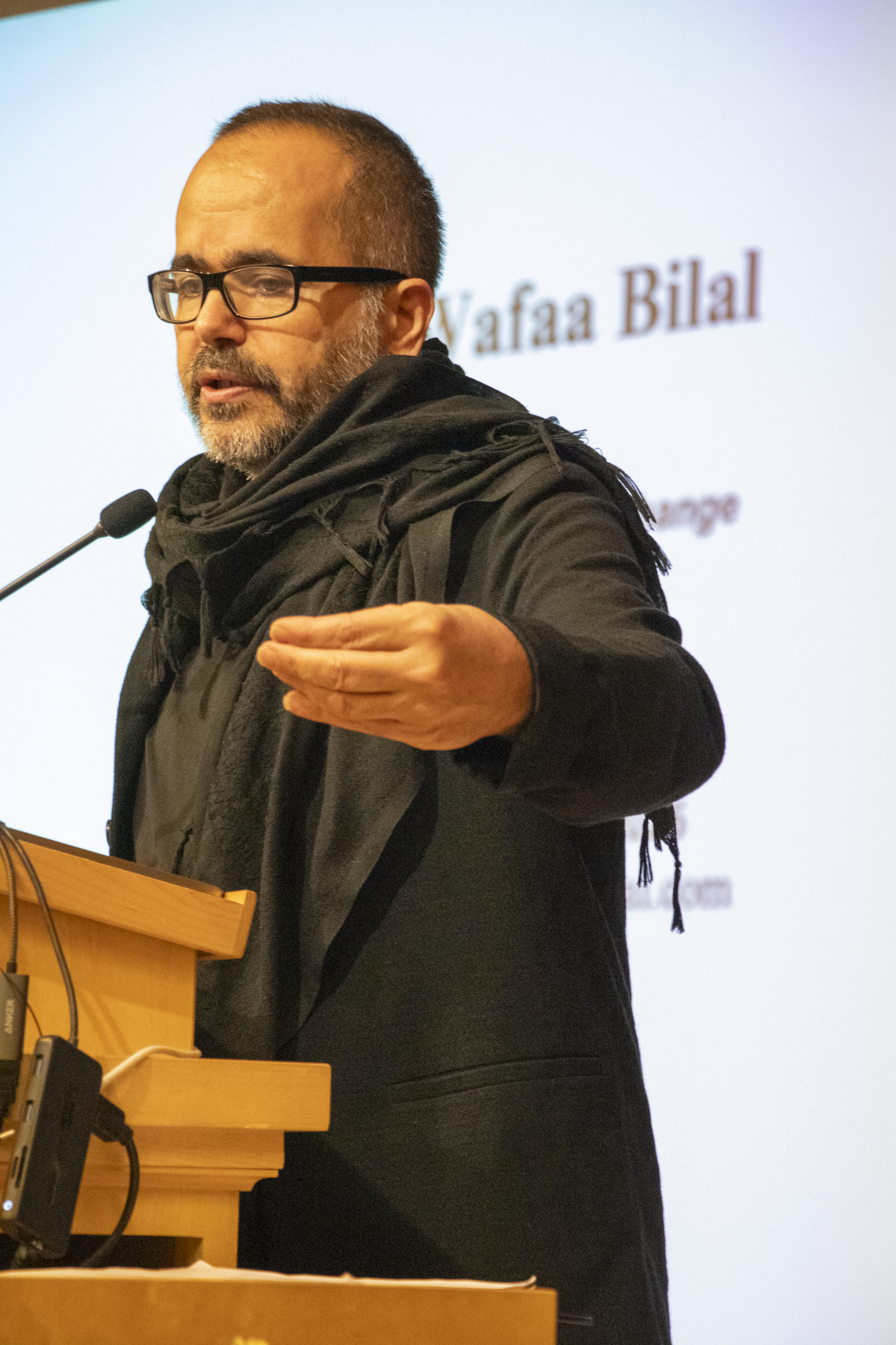“Performing Change”: Artist Wafaa Bilal visits Bowdoin, talks culture and conflict
September 26, 2025
 Isa Cruz
Isa CruzOn Thursday evening, the Bowdoin College Museum of Art (BCMA) welcomed Iraqi-born artist Wafaa Bilal to deliver a talk tracing his work, which explores international and personal dynamics such as cultural memory. A professor at New York University’s Tisch School of the Arts, Bilal has reached international acclaim for his thought-provoking interactive and performance works.
Supported by the Yadgar Family Endowment, the talk is part of an annual series hosted by the BCMA, which has brought historians, conservators and contemporary artists to campus. The fund, established in 2016, supports scholarship relating to the Assyrian reliefs, which have been in the College’s collection since the mid-19th century.
Bilal approaches his work through profound reflections on his heritage, grappling with his experiences growing up in Iraq and immigrating to the United States through the lens of geo-political conflict.
“I am going to share with you a journey of an artist navigating the spaces between the comfort zone of the United States and the conflict zone of Iraq, living simultaneously in these two places, one physically and the other one spiritually. These two places I existed in not by a choice, and [these places] were at conflict all of this time,” Bilal said as he began the lecture.
Bilal highlighted many projects; his work “Domestic Tension” first put him in the spotlight. For the piece, Bilal stayed in a gallery space for 31 days, broadcasting himself on a 24/7 website with a chatroom that allowed viewers to shoot at him with a robotically controlled gun. He shared a video from his last days in the space.
“It was very hard to see the ups and downs, united people, divided people, but that’s what art is supposed to do. It’s supposed to inform, it’s supposed to agitate and it’s supposed to be part of life,” he said in the video. “I [have] no resentment [towards] the people who shot. It’s an encounter, it’s not a didactic peace, it’s an open narrative, one we could all impose on.”
His lecture followed his career, ending with a discussion of his latest work “In a Grain of Wheat,” which contemplates the Islamic State’s destruction of “The Winged Bull of Nineveh,” a sculpture of a protective deity known as a lamassu.
“[Bilal] took 3D digital scans of a sister lamassu from the Metropolitan Museum of Art, and encoded these into Fertile Crescent wheat seed DNA,” his website reads.
Afterwards, the seeds are grown and placed at the foot of a lamassu model.
“The objective [of the Islamic State attack was] to destroy the culture…. [I] wanted a creative way, this time, to make the work visible … with every step, walking, planting itself and saying, ‘I’m here.…’ [The work is] a story of triumph,” he said.
In the face of the emotional challenge of leaving Iraq, losing his brother in a strike by the U.S. military and the continuous tension facing his birthplace, performance has been Bilal’s key to making meaning of his experiences.
“When the work becomes participatory, it’s objective and open-ended. The artist becomes the trigger of a platform.… It’s not scripted, every participant has a role, and without them there is literally no project,” he said.
In an interview with the Orient, Bilal emphasized the person-to-person connective potential of performance art.
“In order to connect with people, you have to generate an empathetic response.… So many other layers prevent us from connecting,” Bilal said. “Somehow performance art surpasses all of these layers and connects us again. [That’s] the power of performance.”

Comments
Before submitting a comment, please review our comment policy. Some key points from the policy: